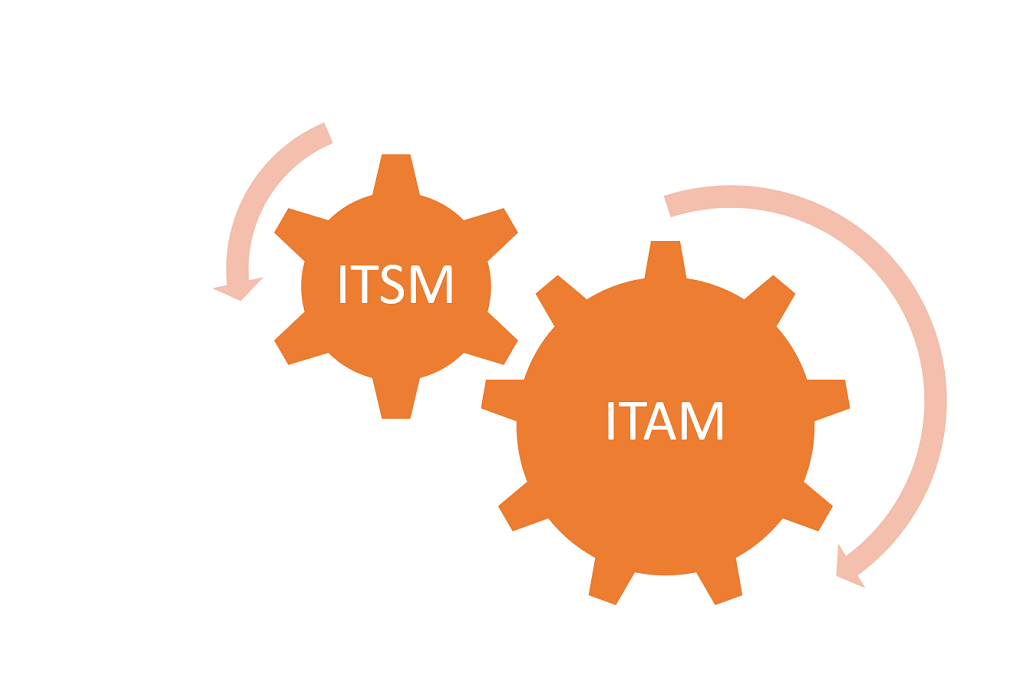IT asset management (ITAM) and IT service management (ITSM) are very closely related siblings when it comes to IT management, yet they often don’t play together as much as they could. While they might often reside within two different IT systems, organisations should look to bring them together to work for better business outcomes.
IT asset management and IT service management activities can be implemented to work to benefit each other, remove duplication, and ensure I.T services are effectively managed and controlled. ITAM can be integrated with many ITIL processes that are included in ITSM including Incident management, Configuration management, change management and service management to name a few. Below we will discuss in more detail how each of these processes benefits from ITAM.
ITAM and Incident Management
Asset Management integrates with incident management and helps the incident team with relevant information such as asset owner, previous asset history and configuration details. Similarly, evaluate your asset health with details of past incident records. Many ticketing systems now will come with Asset management built in to help bring these processes closer.
ITAM and Service Request Management
ITAM assists the service request team whenever a user places a software or hardware request. The ITAM team checks whether or not the Asset is available or not. If not available, they place a purchase request to the vendor and gets it delivered on time to the end-user. The team is also responsible for checking the contract details, compliance before it is delivered to the end-user. IT Asset Management and service request management team collaborate together to meet the SLA committed to the end user and remain compliant with the ITAM policy.
The asset knowledge that is built up because of input from both service requests and incidents should be invaluable to service desk agents. The quicker the service desk analyst can visually see related items the more efficient they will be in meeting SLAs. At a higher level, this asset data can assist in driving technology refresh decisions and activities.
ITAM and Configuration Management
Both ITAM and ITSM have managed data repositories related to assets. In the case of ITSM, the configuration management database (CMDB), or configuration management system (CMS), plus configuration management activities can support ITAM activities.
And in an ideal world, your asset database should be part of the overall Change Management System to avoid duplication. But if they are separate databases, then you’ll need to establish a process for sharing information so that you can ensure the relationship between licensed software and the hardware it’s installed on remains correct and up to date.
ITAM and Information Security
When creating ITAM policies, it’s important to involve IT security personnel – both to leverage their knowledge and whatever corporate policies are already in place. You can then decide whether you need a specific ITAM policy or if your requirements are covered in existing security or acceptable usage policies.
Your IT security team will be a good source of knowledge and support for your ITAM processes and should be able to provide guidance on how to enforce policy directives, as well as how to deal with deviations and breaches (via the service desk, human resources (HR), or other routes).
ITAM and Change Management
Integrating ITAM within change management during the risk analysis process mitigates the risks involved and the change process is defined properly based on this. ITAM provides information to a change team regarding asset location, impact and configuration details. Depending on the changes raised at each Change Advisory Board session, it might be wise for a member of the ITAM team to be in attendance to get a handle on any implications before a change is approved.
Potential ITAM questions for the CAB could include:
- Do we have the appropriate licensing in place? Have we checked with procurement to ensure we’re not approaching our limit?
- Who is the software being deployed to? Will it be deployed to any third-party suppliers or partner organisations?
- Are there any dependencies or add-ons that may need additional licensing?
- Are there significant new hardware requirements?
By working closely with change management, ITAM staff can get ahead of the game so that any ITAM issues can be addressed before the change is implemented – rather than scrambling around afterwards trying to confirm licensing information or worse having to retrospectively address a shortfall.
ITAM and Service Level Management
One of the biggest challenges for IT departments can be making sure the right people are accountable. It’s all too easy to craft ITAM policies that are at arm’s length from BAU operations, and thus get forgotten about or ignored.
Another way to ensure everyone knows their obligations regarding assets is by capturing them within service level agreements (SLAs) and operational level agreements (OLAs). If the updating of Assets break down in any way it will affect other SLA’s by adding more time to some resolution processes
Most service level documents will have standard headings for availability and performance, so I recommend you add in a section for ITAM to include how you’d like audits to be handled and what the criteria for success are (for that particular service). For example, a reduction in audit findings or an increase in accurate asset information.
Closing
ITAM and ITSM – Time to bring them closer
Integrating ITAM into a wider ITSM strategy is undoubtedly a challenging task. As such, the best way to achieve this is by breaking this down and implementing into individual ITSM processes first and prioritising each one. When the correct processes are defined, the appropriate platforms are implemented and integrated, and the right people within the organisation enabled, significant efficiencies can be realised in the end to end life-cycle management of assets and the services delivered to the organisation by IT.

